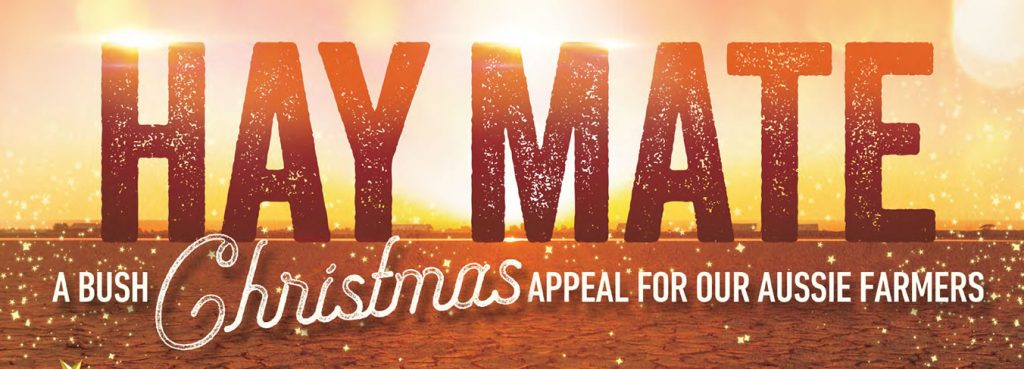HAY MATE APPEAL RAISES $4.6 MILLION FOR FARMERS
Nine’s Hay Mate: A Bush Christmas Appeal concert has raised an astonishing total of $4.6 million for farmers suffering through the devastating drought and bushfires.
All proceeds are going to Rural Aid, one of Australia’s leading rural charities.
With the funds raised, Rural Aid is organising an immediate hay drop to drought and bushfire-affected farmers in the Taree area on the mid-north coast of New South Wales.
Half a million dollars will also be spent immediately on $500 gift cards for 1,000 farmers to help with the purchase of groceries in time for Christmas.
Aussie rock legends lent their support to our farmers, headlining the Hay Mate: A Bush Christmas Appealconcert at Mornington Racecourse in Victoria. Music legend John Farnham led an all-star lineup that performed into the night.
Vanessa Amorosi opened the concert with Have A Look and a Slim Dusty classic. Daryl Braithwaite worked the crowd as they joined in on his hit Horses, and they backed it up by singing along with John Williamson on True Blue. Everyone was on their feet as Jon Stevens performed a medley of INXS and Noiseworks hits, and John Farnham closed the show with his signature song, You’re the Voice, and an encore of AC/DC’s Long Way to the Top.
Concert-goers and viewers were also treated to performances by The Black Sorrows with Vika and Linda, All Our Exes Live in Texas, Tim Wheatley and Little Georgia.
Nine was right behind the farmers cause in a three-and half-hour broadcast that captured all the excitement from the concert, while hosts Richard Wilkins and Rebecca Maddern chatted to the performers and some of Australia’s biggest names in entertainment manned the phones to take donations from the public.
Wayne Thomson, National Business Development Manager with Rural Aid, praised Nine for again showing its amazing commitment to supporting our farmers and their families.
“Hay Mate has been an unbelievable success and we can’t thank Channel Nine enough for televising the concert and Glenn Wheatley for organising it, he has worked tirelessly,” Mr Thomson said.
-2-
“We would also like to thank the public and corporate Australia for their incredible support. Rest assured, the money raised will provide much needed relief to farming families across drought-affected regions in the form of hay for livestock and financial assistance to pay bills and buy food.”
Event curator and organiser of Hay Mate, Glenn Wheatley, said: “I am beyond pleased with the result from Hay Mate. With the help of Rural Aid we can commence distribution of hay and water immediately to the farmers most in need. The generosity of all the Australians who donated is very touching.
“The generosity of all the artists who performed and donated their time is also touching. We will be able to make it a happier Christmas for many farmers because of Hay Mate.”
Along with the generosity of the public, corporate supporters dug deep for the farmers, with a special mention to these donors:
- Morgans: $1.2 million
- Holdmark: $750,000
- CBA: $500,000
- BPAY: $100,000
- Tomra: $100,000
The Hay Mate concerts in 2018 and 2019 have raised over $7.5 million for Rural Aid, helping Australian farmers by providing hay and water and financial assistance.
You can still donate at www.haymate.org.au or call 1300 327 624.
For further information please contact:
Nine Publicity
Clare Gibbons
03 9420 3466







